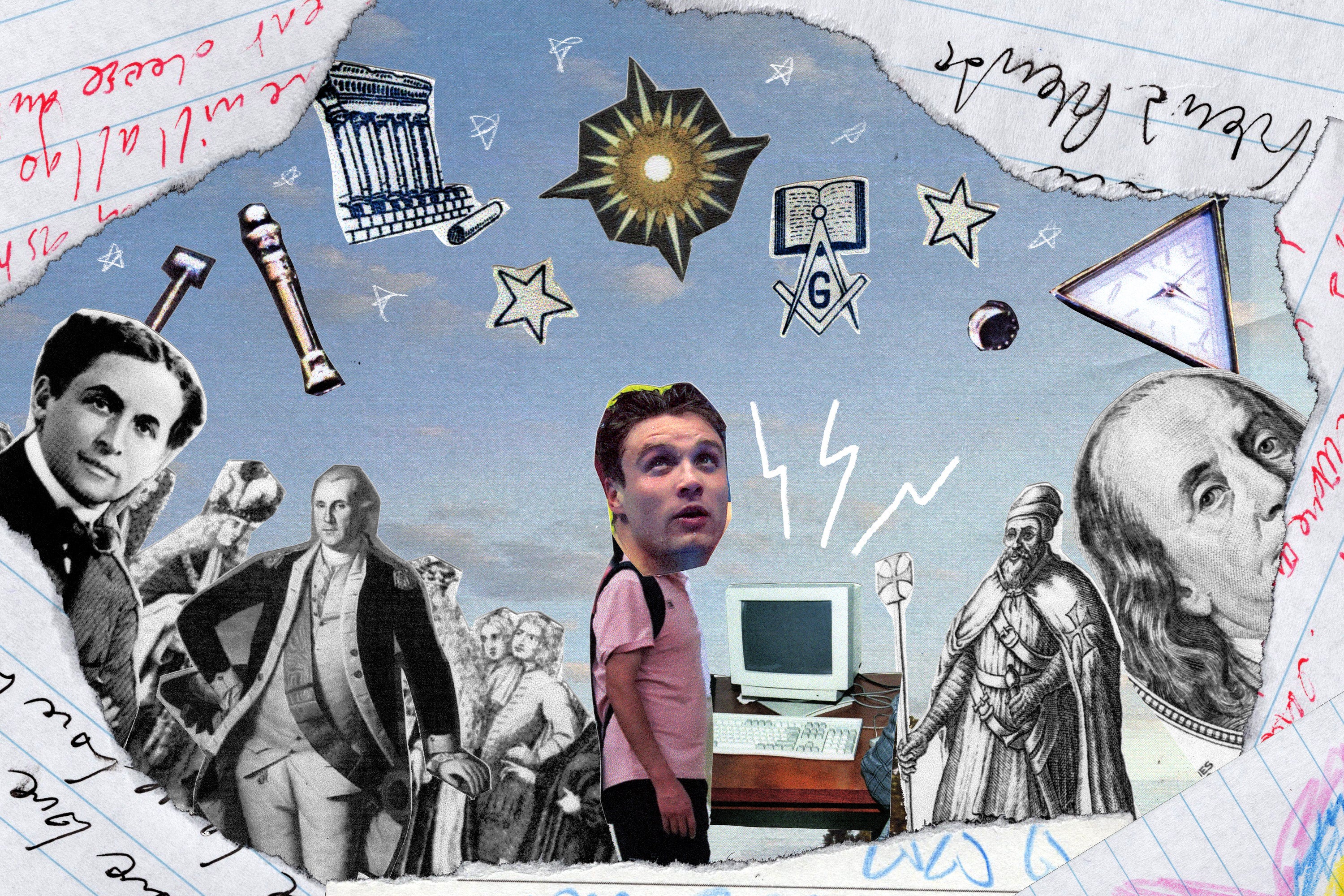Exploring the Key Benefit of Joining Freemason for Lifelong Connections
Exploring the Key Benefit of Joining Freemason for Lifelong Connections
Blog Article
Exploring the Mysteries of the Freemason: What You Required to Know
The Freemason, a term usually shrouded in intrigue and controversy, represents an intricate tapestry of historic reality and modern misconception. Developed in the late 18th century, this secret culture was originally rooted in the Knowledge's suitables however has actually given that come to be identified with conspiracy theory concepts regarding elite control. As we navigate the origins, essential figures, and the stark contrast in between misconception and truth, one need to take into consideration just how these stories influence contemporary perceptions of power and privacy. What may be disclosed via a more detailed assessment of these aspects might challenge long-held assumptions concerning the darkness that stick around in our society.
Beginnings of the Freemason
The beginnings of the Freemason are soaked in a mix of historical intrigue and ideological eagerness. Established in 1776 in Ingolstadt, Bavaria, by Adam Weishaupt, the team was initially created as a secret society focused on promoting Knowledge ideals such as factor, secularism, and the separation of church and state. Weishaupt, a teacher of canon law, looked for to challenge the dominating authority of the church and state, which he saw as overbearing institutions suppressing intellectual and personal liberty.
The Freemason sought to hire significant members from different social industries, consisting of politics, academia, and the arts, to promote a network committed to these Enlightenment principles. The culture operated under a veil of secrecy, using coded language and rituals to safeguard its participants from persecution, specifically offered the repressive climate of the time. Nonetheless, the Freemason faced considerable resistance from both governmental authorities and spiritual establishments, which viewed the group as a danger to their power.
Trick Numbers and Participants
That were the essential numbers that formed the Freemason's early influence and direction? The Bavarian Freemason, established in 1776 by Adam Weishaupt, emerged as a reaction to the oppressive societal structures of the time. how to become a freemason. Weishaupt, a legislation professor, imagined the company as a way to promote Enlightenment suitables such as reason, secularism, and equality. His first recruitment efforts included prominent intellectuals, such as Baron von Knigge, who played an important duty in expanding the group's membership and organizational framework.
An additional considerable figure was Johann Gottlieb Fichte, a prominent thinker whose concepts on nationalism and education and learning resonated with the Freemason's objectives. Although Fichte was not an official participant, his philosophical underpinnings affected the group's ideology. In addition, numbers like the writer and thinker Johann Wolfgang von Goethe were linked with the wider intellectual movements of the moment, although their direct involvement with the Freemason remains debated.
These vital figures contributed to the Freemason's very early direction, pressing the limits of political and social thought, while their collective initiatives aimed to test established standards and foster an environment of progressive adjustment in Europe.
Myths vs. Reality
Numerous false impressions surround the Freemason, often blending reality with fiction in a way that obscures its real nature. The concept that the Freemason proceeds to exert considerable impact over globe events is a myth - how to become a freemason.
An additional prevalent myth is that the Freemason makes up a network of elite people manipulating global affairs. In fact, many conspiracy concepts overemphasize the team's significance, attributing unproven motives to social trends and events. This has resulted in an oversimplified sight of complicated problems.

Modern Interpretations
Contemporary analyses of the Freemason usually reflect more comprehensive social anxieties and a fascination with secrecy and power. This contemporary lens regularly connects the Freemason with conspiracy theory concepts that recommend a hidden elite orchestrates world events, controling federal governments and economies for their own gain. Such narratives take advantage of an ingrained distrust of authority, particularly in times of dilemma or social upheaval.

Additionally, some contemporary analyses mount the Freemason as a metaphor for the complexities of globalization and the interconnectedness of prominent individuals and organizations. This perspective urges a vital evaluation of exactly how power dynamics run in today's globe, highlighting the equilibrium in between openness and secrecy in governance and corporate techniques.
Social Effect and Tradition
Influenced by centuries of intrigue, the cultural impact and heritage of the Freemason expand much beyond its historic beginnings. This secret society, established in the late 18th century, has actually permeated different aspects of popular society, from literary works and film to music and art. The principle of the Freemason has actually developed into an icon of conspiracy theories, frequently standing for a perceived covert power manipulating global occasions.
In literature, writers like Dan Brown have actually woven the Freemason into detailed stories, captivating viewers with styles of secrecy and power. Movies such as "National Treasure" and "The Da Vinci Code" better continue the allure of the culture, blending reality with fiction to produce engaging stories.
The Freemason's influence likewise extends into songs, with artists about his referencing the organization to stimulate styles of rebellion and social review. This representation has explanation actually added to a fascination with the concept of private groups managing the bars of power, reflecting societal anxiousness about authority and openness.
Ultimately, the Freemason's tradition is an intricate tapestry of myth and truth, forming perceptions of secrecy and control in contemporary discourse. Its enduring existence in society emphasizes mankind's seasonal mission for understanding hidden truths.
Conclusion
The expedition of the Freemason reveals a complex interplay between historic truths and modern myth-making. Established in the Enlightenment period, this society intended to challenge overbearing structures, yet its heritage has actually been eclipsed by conspiracy theory theories that suggest elite adjustment. Recognizing the differences between the original perfects and contemporary interpretations is crucial for comprehending the sustaining attraction with the Freemason and its significant impact on social stories surrounding power and privacy in society.
Report this page